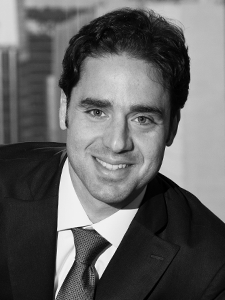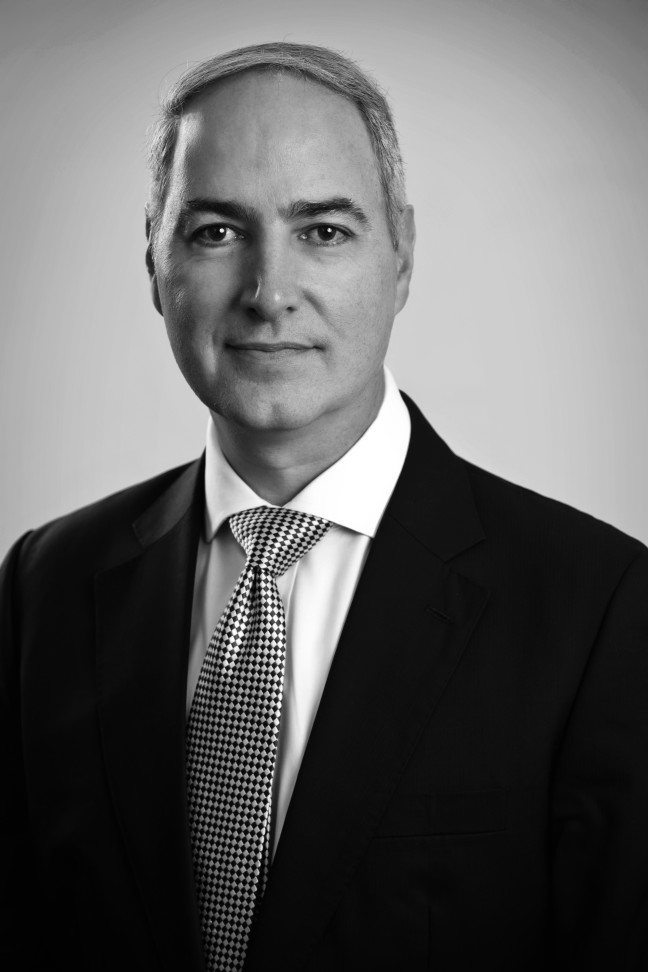TTR Dealmaker Q&A
January, 2016
J&F Investimentos acquires Camargo Corrêa´s 44% stake in Alpargatas
Alessandro Farkuh
Banco Bradesco BBI
On 23 December, J&F Investimentos closed the acquisition of a 44.12% stake in Brazil’s leading footwear manufacturer, Alpargatas, from Camargo Corrêa, a month to the day after the transaction was officially announced. Alessandro Farkuh, Head of Mergers & Acquisitions at Banco Bradesco BBI, led the investment banking team that advised the seller on its exit from the shoe business, which was unconditionally approved by Brazilian regulator, CADE.
__________________________________________________________________________
Q: How did Bradesco BBI land this mandate?
A: We have been advising Camargo Corrêa in several transactions. Bradesco BBI has been the investment bank of the CCSA group. As it regards Alpargatas, specifically, we have led every M&A transaction for them since 2012, including its 60% acquisition of Osklen, currently one of its most important brands, together with Havaianas. We advised the acquisition of 30% in 2012 and then, at the end of 2014, we helped Alpargatas exercise its option to acquire another 30% and consolidate the control of Osklen. We also helped them in the negotiation to renew the licensing agreement with Mizuno for 26 years, as announced in 2014. Finally, most recently we worked for them on two parallel fronts; on the one hand helping Camargo Corrêa to sell its controlling stake, and on the other hand working with Alpargatas to sell the businesses units related to its Topper and Rainha brands.
Q: What prompted this transaction?
A: Our client was seeking liquidity; that was the principles reason. The rationale behind putting Alpargatas in the street was purely an economic decision, to strengthen Camargo Corrêa’s financial position.
Q: Why was Alpargatas the chosen divestiture candidate?
A: Camargo Corrêa is a large portfolio manager. We see CCSA transforming itself, in essence, into an investor group which manages a portfolio of sizable investments. They have the power business, the cement business, the transport/concession business, textiles, very different business units that are not necessarily dependent on each other. At the middle of last year, Alpargatas was the most viable asset Camargo Corrêa had that could be sold. It didn’t depend on any third party or shareholder. It’s a company that’s been performing well for several years and profitable enough to justify a sizable amount of proceeds. Also, we were confident that announcing the sale of its Topper and Rainha brands, given those operations were not exactly aligned with the strategy of Havaianas, Osklen and Mizuno, would help to propel the sale process. In hindsight, I’m 100% sure they made the right decision.
Q: How was the transaction structured and presented to the market?
A: Alpargatas was extremely well organized and 100% professionalized. We were conducting the transaction at Camargo Corrêa’s level and putting a lot of energy to minimize any interference on the company’s day-to-day operation. We were there organizing the information to support a truly competitive process. Due to market rumors, our client decided to formalize the transaction through a stock exchange announcement in August and confirmed we were helping; once that happened we needed to expand access to an even larger number of interested parties. The transaction attracted several large financial and strategic investors, with local and global operations. As in any relevant transaction similar to this one, at the end of the day we had some guys with a lot more focus on the process than others. We saw strategic buyers trying to join forces with financial investors; global companies and global funds with widely different profiles. The one that was most agile, that understood our concerns and how we were trying to speed up the process, ended up acquiring the company.
Q: How would you describe the pool of suitors?
A: Havaianas is a global brand. It’s one of the very few brands that can be recognized anywhere in the world. It has operations in all continents. When you talk about selling Havaianas and all the other brands of Alpargatas’ portfolio, every group focused on luxury consumer products globally, Americans, Europeans, the most important players related to consumer products, demonstrated interest. We were being extremely selective to make sure everybody who came into the process had the conditions to write the check we sought and to assess the asset quickly. Considering the fact that it was almost a BRL 3bn transaction, it required a lot of energy from the interested parties to justify putting that amount of money in Brazil, to minimize execution risks, and to make sure they were doing the right transaction based on the right terms, so you had a lot of groups coming together to form consortia.
Q: How did you avoid selling the asset on the cheap in a down market?
A: This is a true example of where despite all the uncertainties and concern about Brazil, if you apply the right pressure in the process, define the right tactics of negotiation and base the rationale of the transaction on the right elements, you can maximize value and accelerate speed of execution. We obtained an extremely reasonable premium, comparing the announced BRL 12.85 share price, with the unaffected price per share of Alpargatas (as of August/2015). The whole concept we brought to investors was related to a company that was performing very well on top of the Brazilian contribution to revenues. It’s a global brand and most of its potential is related to its international expansion. The main idea was to try to take some advantage of the Brazilian situation, where the currency was increasing some attractiveness assuming the price per share in US dollars, and on the other hand to maximize the valuation of the company based on the potential to expand its operation in regions where there is still significant growth potential. If you look at Alpargatas, though it has an Asian presence, it’s not yet where it could be, same goes for the US, it’s not yet consolidated. Brazil still represented the largest contribution to sales in 2015. This is exactly the opportunity. The valuation wasn’t only based on the past performance of Alpargatas. Considering how aggressive the profile of the new controlling shareholder could be, the ratio of domestic versus international sales could be changed quickly.
Q: Why was J&F Investimentos the best buyer for the asset?
A: J&F is extremely aggressive and extremely competent in terms of doing sizable transactions like this one. J&F was at the same level as anybody else in the process, we considered them global investors. They were the ones that really understood how important it was to close the transaction with great speed and at the same time, indicated an attractive price that balanced the final elements for our client. But apart from the economics of the deal, their ability to meet the speed and agree with the very specific conditions we demanded to increase certainty of closing made J&F the right choice; it was clear to them that once we announced the transactions we couldn’t go anywhere but the closing. They were fast, and highly intelligent to translate our requests and support a very efficient negotiation process. We announced the transaction in less than two weeks after receiving the bids which is a testament to how aggressive we were and how competent J&F was.
Q: What factors were most important in selecting the winning bidder?
A: There were two main variables for us: first the price and second how long it would take for our client to receive the cash. If it takes three months longer to receive the proceeds of the deal, over time with interest rates as they are, it would not be the same for Camargo Corrêa. We were basing the process on these two elements, speed and pricing, and J&F was the most efficient player in balancing those two elements.
Q: How was it closed within such a short timeframe from the announcement date?
A: It was extremely intense; as intense as the negotiation period between receiving bids and announcing the winner. Between 22 November and 23 December all resources were related to antitrust approval processes and final documentation. That previous two-to-three-week period immediately before the announcement took an immense amount of energy. I was pretty much dedicated with the rest of the group to this transaction. We were negotiating with the final interested parties 24×7, managing pressure from the process and the natural expectation of our client. It was a pretty engineered process, in-house and on everything related to the interested parties.
Q: Why was this an opportune time for Camargo Corrêa to exit?
A: It was absolutely a good time to sell. When we look back to last year, I doubt we could see similar competition for any other transaction in Brazil. We had the full attention of the bidders. Despite the Brazilian macro conditions, the high quality of Alpargatas could neutralize that situation; we could put it aside a little bit to execute the process. During most of the time we were negotiating the deal we had all the attention of the investors. We felt from the most engaged and interested parties, that they were seriously dedicated to that transaction. I believe the decision of seeking liquidity and pursuing the divestment by Camargo Corrêa, put the deal in a very good environment by being the biggest and most interesting transaction in the market. It was very intelligent timing to put the asset up for sale; our client had very strategic vision by accepting the recommendation to sell Alpargatas at that moment. It was the reference transaction for any sizeable investor in that industry looking to Brazil.
Q: What are the synergies for J&F Investimentos?
A: This was an opportunistic approach from J&F. They do invest in companies and opportunities that could be explored globally. I see them putting resources towards things that can be grown, like the protein, processed food, pulp and paper businesses and other ventures with great growth potential. From my perspective I can’t judge or make assessments based on any synergy, other than good economics based on what they can generate as returns in the near future.
Q: Is it an asset that unsuccessful strategic investors will continue to court?
A: Alpargatas was being approached by everybody for years. It was not new to Camargo Corrêa that a lot of people would be interested. I would bet that similar flow of interested parties will continue with J&F, but now you will have a different value reference. The price per share so far was not reflecting the true value of the company. I would assume people will continue approaching J&F as they had with Camargo Corrêa for years, but with a different mindset – knowing what they paid. I see J&F with a very aggressive and consistent plan of expansion, which was the true element for the pricing of the company. They will invest a lot of energy to bring Alpargatas to the next level. The company has great management, a beautiful legacy, a lot of know-how in doing what they do; all of that combined with the experience of J&F working abroad could be explosive. I do believe they will do a great job.
Q: Did the volume of shares acquired surpass the threshold requiring a public tender offer for the remaining shares?
A: It does on the common shares. J&F will need to launch a mandatory tender offer for the other common shares to fulfill its legal obligation.
Q: Which firms advised J&F on the deal?
A: None, it was handled internally. That is the way they do deals, they use their internal team. They are extremely competent and smart and have a distinct view of negotiation processes. I think that was one of the reasons J&F ended ahead of other bidders. The team involved in the deal was part of the decision-making process and, at the same time, responsible for conducting the front lines – they could rapidly pull together the relevant information for their assessment throughout the process.
Q: How does this transaction stand out from other deals you’ve led?
A: It’s a very special deal. It’s for sure one of my most relevant transactions so far; and it is not a matter of size or execution complexity. This transaction comes after a sequence of successful M&A transactions completed with Alpargatas in a window of about five years. I can’t recall in Brazilian M&A history a similar situation. To announce five or six M&A transactions and then be able to sell the company the way we did; from any angle it cannot be considered anything but a good transaction, and in a terrible macroeconomic situation, at that. The sale of the controlling stake of Alpargatas is a final piece of a long history in which I personally was involved, beginning with the acquisition of Osklen. Looking back and seeing the importance the other initiatives had in bringing this to reality makes this transaction even more special. Bradesco BBI was the partner management trusted to help them, and the trusted advisor responsible to translate those transactions into reality in the eyes of the shareholders. I was fortunate to be the person to lead all those initiatives. It is truly a win for Camargo Corrêa, for Alpargatas’ management, and obviously for Bradesco BBI to lead this deal in such a complex macroeconomic environment.






